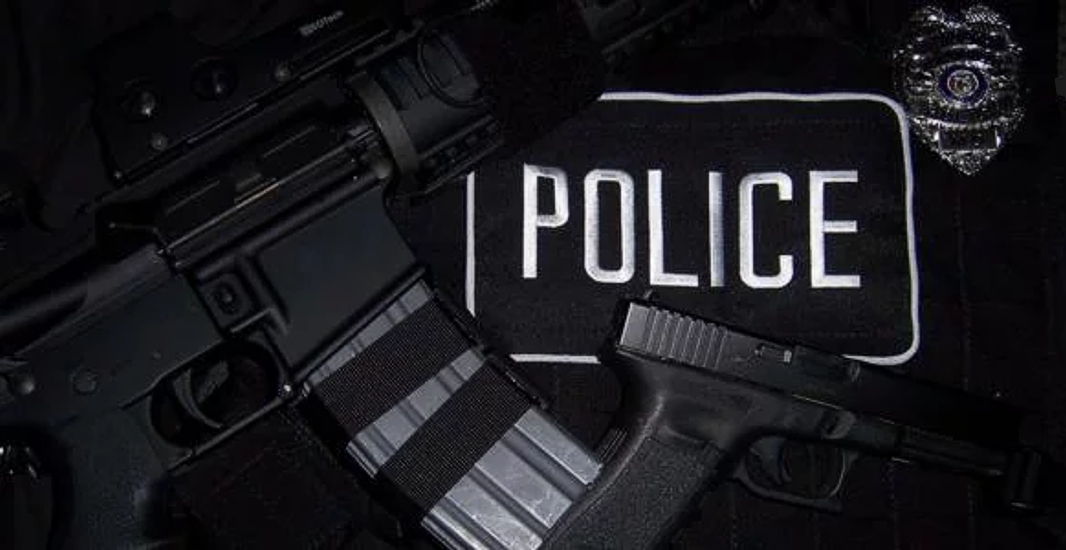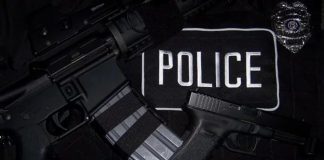Any individual can become violent and the vast majority of society would commit a homicide under the right circumstances. Consequently, it cannot be assumed that the types of offenders discussed [in this paper] HERE are the only ones who may attempt to injure or kill a police officer.
In Killed in the Line of Duty, the FBI studied 93 individuals that attacked and/or killed law enforcement officers and found that the individuals who most frequently committed violent acts against law enforcement officers were males with an average age of about 26.5 years old. They would most likely be unmarried, have a high school degree and be of average height and weight.
Additionally, they would have a previous criminal history and come from an unstable family with some history of alcohol abuse. Moreover, the FBI study also found that a small number of women had attacked and/or killed law enforcement officers.
Therefore, any person with the motive, means and opportunity may assault an officer.
The FBI study found that two types of personality disorders were very common among people who had killed officers. Fifty-six percent had antisocial personalities and twenty-three percent had dependent personalities.
A person who has an antisocial personality knows the rules that govern society, but do not accept the fact that the rules apply to them. The most common types of antisocial personalities involved in officer deaths are those with schiopathic, psychopathic Behaviors
A psychopath has no feelings for the suffering of others and usually only expresses remorse when they think it will convince a policeman, prosecutor, or judge to go easy on them. The sociopath is examined in more depth below because this particular personality disorder presents the greatest danger to officer safety.
The FBI study also found that ninety three percent of the fifty-one killers in the study had been diagnosed with having a personality disorder. Psychiatrists and psychologists who describe individuals that display an ongoing pattern of maladapted social behavior and inappropriate emotional responses use the term “personality disorder”.
The antisocial personality defined as a sociopath, has a history of antisocial acts, beginning in childhood or adolescence and continuing into adulthood. People with this disorder follow their impulses without consideration for others and without experiencing guilt or remorse. They seem to have no conscience and lack many normal emotions. Psychologists believe that sociopaths are the products of parents that have rejected their children. The parents who fail to provide the necessary support and affection do not form the bonds that are necessary for children to learn moral values. The signs of an antisocial personality become apparent before the age of fifteen.
The typical child with an antisocial personality will have serious conduct problems with both the school and legal systems before they turn eighteen. These conduct problems include: truancy; running away; fighting; stealing; destruction of property; cruelty to animals and habitual lying. These conduct problems continue into adulthood and reveal themselves in the following ways: impulsiveness; recklessness; blatant disregard for the truth; excessive irritability and aggression; repeated violations of the law; irresponsible parenting; inability to hold a steady job; failure to honor financial obligations and the incapacity for normal friendships or love.
Individuals with antisocial personalities often seem outgoing, friendly and cooperative when talking to a police officer. The sociopath tries to lull the police officer into a false sense of security while at the same time trying to size up the officer. The sociopath will frequently try to invade the officer’s personal space to see how the officer will react. When questioned by the police officer the sociopath will try to evade questions about themselves and try to control the conversation. Once the sociopath knows what type of person they are dealing with, they try to manipulate their intended victim into giving them what they want or doing something that serves the sociopath’s needs.
When confronted, the sociopathic personality will deny any involvement in illegal activities and often blame others. If this does not work they may rationalize their actions with lies and half-truths and/or their own interpretations of the laws they violated. When the above steps do not accomplish what the sociopath desires and he thinks he can get away with it, he will resort to violence. The most dangerous thing about a sociopath is the suddenness with which he/she employs violence.
The dependant personalities are the complete opposite of antisocial personalities. Dependant people often appear shy and comply willingly with an officer’s directives. The officer must be aware not to develop a false sense of security simply because the person is shy and willingly complies with the officer’s orders. Officers must understand that people with dependant personality disorders may suddenly lash out violently against the officer when faced with the threat of or the actual separation from those on whom they depend.
The characteristic of a dependant person is low self-esteem and their dominant partner becomes their lifeline to the world around them. This is why the dependant person fears both emotional and physical separation from the dominant person. Therefore, any threat toward the dominant partner is perceived by the dependent partner as a life threatening attack on him/her. This phenomenon occurs most often when a police officer tries to arrest a husband for spousal abuse and the wife suddenly attacks the officer.
People with dependent personality are often attached to people with antisocial personalities. These two personalities seem to be a natural match because the antisocial personality is the manipulator and the dependant personality is the willing servant. The dependant person lacks the self-confidence and fears independence while the sociopath thrives on the dependency of the other. The helplessness of the dependant partner provides the rationalization needed to justify the actions by the antisocial partner. For example, when he takes advantage of others he can say he did it to fulfill the dependant’s needs.
While the antisocial personality disorders have contributed significantly to the numbers of officer deaths, other psychiatric disorders have been identified as well. In recent years the number of police officers killed by deinstitutionalized mental patients that refuse to take medication has been on the rise.
In 1998, Michael Lauder, a Yale Law School graduate who suffered from schizophrenia, slashed his fiance to death with a knife. Jacob Chestnut, who also suffered from schizophrenia, killed two Washington D.C. Capitol police officers.
The total number of individuals with active symptoms of schizophrenia or manic-depressive illness is approximately three and a half million. The National Mental Health Council has estimated that forty percent of them roughly 1.4 million people – are not receiving any treatment in any given year. It is, therefore, not a question of whether someone will follow Michael Lauder and Jacob Chestnut into the headlines, but when.
Recent studies have shown that about half of those who have schizophrenia or manic-depressive illnesses have markedly impaired insight into their illness. That is, they do not know that they are sick because their brain disease has affected the frontal-lobe circuits that are necessary for complete self-awareness. If they are not sick, they reason, they do not need a cure.
Schizophrenia is a severe disorder with bizarre behavior. When in the acute phase of the disease, its victims are unable to function normally, either at work or in their social lives. Symptoms of schizophrenia generally appear in early adulthood; however, the disorder may begin in middle or late adulthood. A person with schizophrenia will experience delusions that involve irrational beliefs that are held despite overwhelming evidence that these beliefs are wrong. They often believe that extraterrestrial beings or secret agents are plotting against them and are controlling their thoughts and actions. A schizophrenic’s speech is also abnormal. He/she often talks for long periods of time without saying anything of meaning.
Schizophrenia has two phases known as the active and residual phases. During the active phase a schizophrenic’s behavior progressively deteriorates and becomes more and more bizarre. The schizophrenic then enters into the residual stage where the bizarre behaviors lessen but are still present.
Over the last forty years, the use of new medications to treat mental illnesses has improved greatly. Patients with severe illnesses like schizophrenia and manic-depressive disorders have responded well to these new medications and many of them lead quite normal lives. This is one of the main reasons why most of the large mental health institutions have been closed or significantly reduced in size and number. More than ninety percent of state psychiatric hospital beds that existed in 1960 have been eliminated.
However, even with the impressive success rate of the new medications, under the current system of releasing patients without implementing a way to ensure they take their medicine may be the root cause of up to a thousand homicides a year just in the Washington D.C. area.
However, most psychotic individuals, who are merely making threats against others or living on the streets and eating out of garbage cans, are not deemed legally sick enough to qualify for outpatient commitment. The failure of society to take care of the mentally ill is more then just a homeless problem.
At this very moment, on the streets of Dallas, a mentally ill homeless person is being arrested for a crime, such as assault, criminal trespass or sleeping in a public place. This person will be booked into the county jail (Lew Sterrett) and placed into a holding cell with murderers, robbers and any other criminals the police officers in the metroplex have caught that day.
The mentally ill homeless person will be given medicine and will start to conduct himself in a normal manner. If he or she survives their time in jail they will be released and go back on the streets, stop taking their medication, and the pattern of violence will start all over again.
The emerging pattern of violence is clear. It is part of a larger pattern, increasing numbers of severely mentally ill individuals among the homeless population are incarcerated in jails and prisons for offenses committed while psychotic and loitering in parks, public libraries and transportation stations. The pattern is the product of deinstitutionalization gone awry, the discharge of thousands of mentally ill individuals from the nation’s public psychiatric hospitals without ensuring that they get the medication they need to remain well.
In 1988, The Dallas Police Department lost Officer John Chase in a shooting involving a mentally ill person. Officer Chase had stopped a motorist on a traffic violation and was talking to the driver when a mentally ill person approached him and started to argue with him. Officer Chase and the mentally ill man got into a scuffle and he took Officer Chase’s revolver from him and shot him in the face while Officer Chase, on his knees, begged for his life. The mentally ill man was later killed in a shoot out with the police a block from where Officer Chase was murdered.
Violence has become an everyday event in our nation’s news broadcasts and publications. However, most people have had very little personal experience with it. This holds true for most police officers as well.




